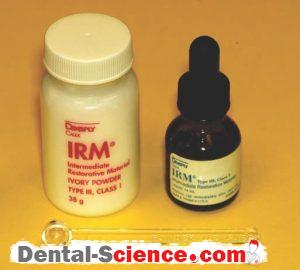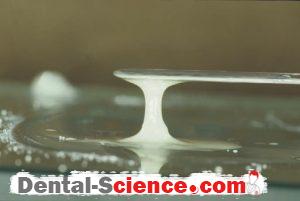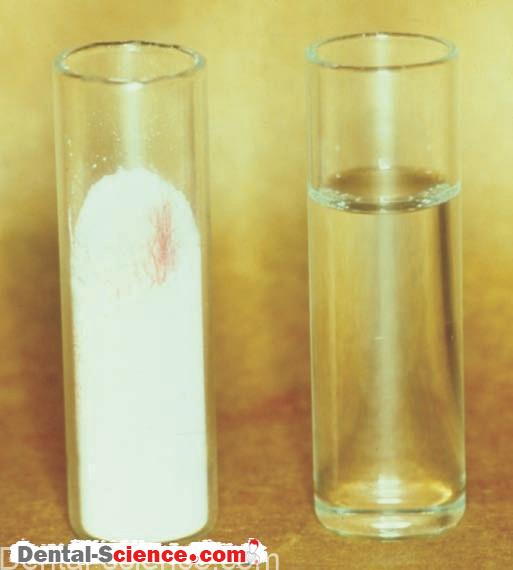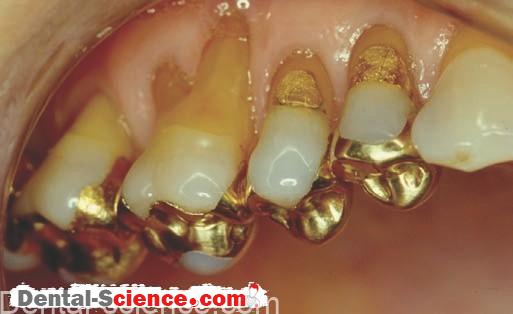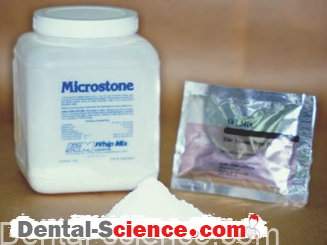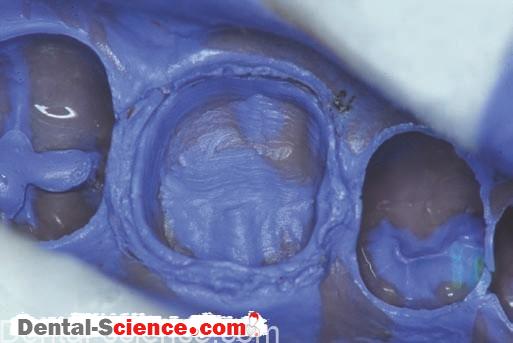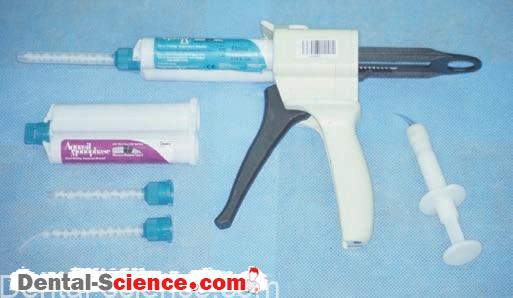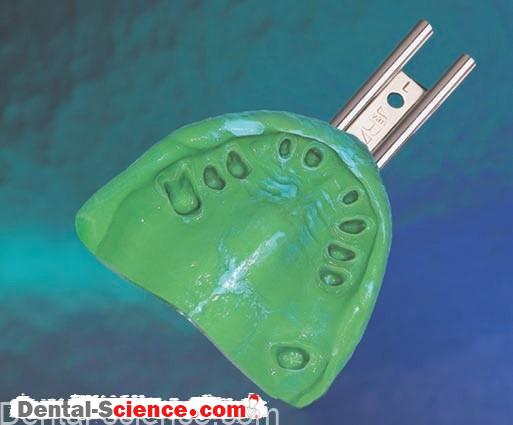Zinc Oxide Eugenol
– When zinc oxide is mixed with eugenol, Zinc Oxide Eugenol (ZOE) cement is the result.
A. Products
1. Unreinforced Zinc Oxide Eugenol products are still on the market, but they should only be used when strength and solubility are not critical.
Such Zinc Oxide Eugenol formulations for temporary cements are popular and perform adequately.
2. Reinforced Zinc Oxide Eugenol products are stronger and less soluble than unreinforced products.
Reinforced Zinc Oxide Eugenol products are used for temporary restorations and intermediate bases.
Additives include alumina, rosin, and polymethyl methacrylate resin.
B. Properties of Zinc Oxide Eugenol
1. Formulations of ZOE have been developed for nearly every use of dental cements.
This cement works very well for some uses, but not for all.
Unfortunately, ZOE products including reinforced ZOE do not have adequate strength and are too soluble for use as permanent cement.
2. The ZOE cement is obtundent and, therefore, very useful when pulpal protection is desired or a sedative filling is needed.
C. Mixing
1. Paste-Paste Products
– The two pastes are dispensed in equal lengths on a paper-mixing pad.
– The pastes have different colors.
– Mixing with a cement spatula swirls and strops the two pastes together.
– Stropping would be similar to a back-and-forth cake frosting motion.
– Mixing continues until a homogeneous color is obtained.
2. Powder-Liquid Products
– The powder is measured and dispensed with a scoop.
– The liquid is dispensed as drops.
– A glass slab is commonly used for mixing powder/liquid ZOE products.
– The powder is forced into the liquid with a cement spatula.
– The mixing process first incorporates large increments of powder, followed by smaller
increments, as adding powder becomes more difficult.
– The mixing process requires time to incorporate enough powder to obtain acceptable
properties.
3. Cement Consistencies
– When a luting mix is desired with a powder/liquid product, mixing is continued until
a consistency is obtained such that a “1-inch string” of material occurs when the flat surface of the cement spatula is pulled from the mixed material.
– When a base consistency is desired, mixing is continued until the material has the
consistency of pie dough (can be rolled into a ball with fingers covered with cement powder but has a bit of a crumbly nature).
– If too little powder is used, the mixed mass will be sticky and difficult to handle.
– A proper base mix will not stick to instruments and can be pushed or condensed into place and even carved.
4. Clean-up
– As with all dental cements, the set material is nearly insoluble in water.
– Therefore, it is important that the cement spatula and glass slab are washed with water
before the material sets.
– Soap assists with clean-up because eugenol is an organic liquid that is only slightly soluble in water.
– If one delays clean-up, the set material is difficult to remove from the instruments used.
– Set ZOE materials can be dissolved with a variety of organic solvents, such as alcohol, orange solvent, and others.
5. Setting Reaction
– Water accelerates the ZOE setting reaction.
– Therefore, ZOE materials set faster in the mouth than they do when out of the mouth,
making them quite useful and popular.
6. Removal of Excess Zinc Oxide Eugenol
– Removing excess ZOE luting material is very easy if the material is allowed to set and become a brittle mass, after which it clearly breaks off at the margins.
– With an instrument such as a scaler or an explorer, it usually breaks off in large chunks.
– If one is impatient, the soft material breaks into little pieces, making removal more difficult.
( Agar impression material )
D. Uses
1. ZOE cement is a very old and yet still useful material. Its obtundent property makes it very useful for sedative and temporary fillings.
Its use as a base has declined greatly. Other cements that release fluoride have replaced ZOE.
2. A reinforced ZOE base can withstand amalgam condensation forces and support the
overlying amalgam restoration.
3. Biocompatibility is very good because ZOE seals very well.
However, eugenol causes hypersensitivity reactions in some patients. In addition, eugenol can irritate the skin of dental personnel.

